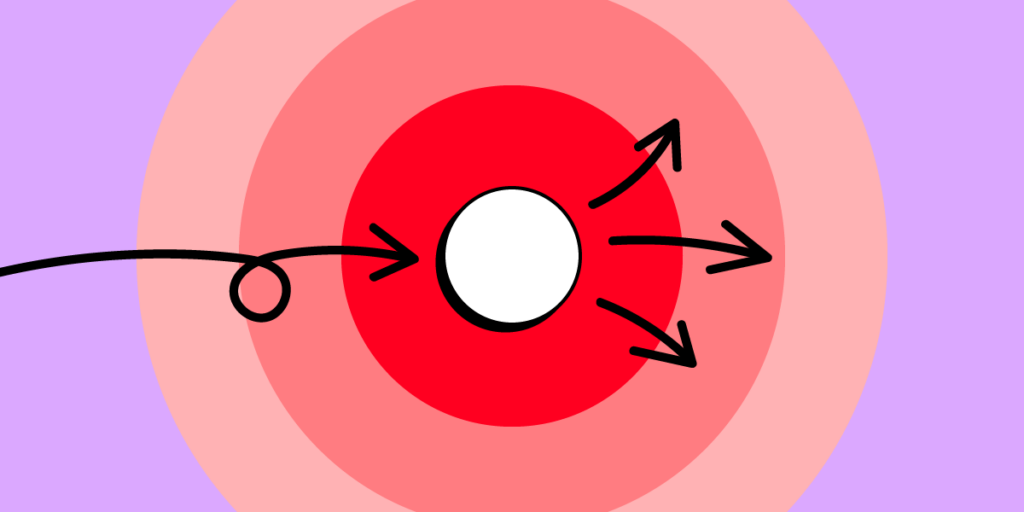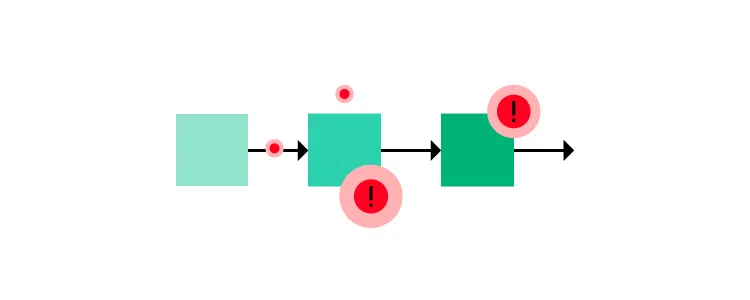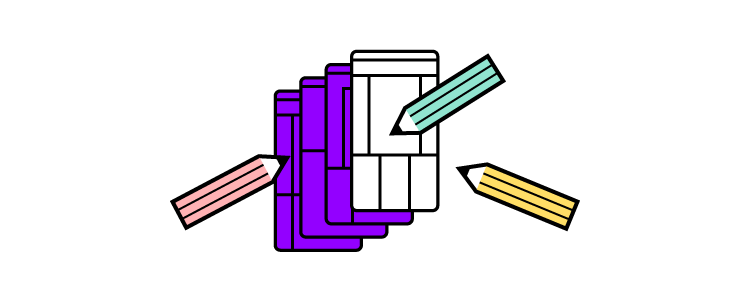Taming Scope Creep in Product Design

Scope creep is a common issue in UX design projects. By proactively preventing scope creep, UX designers can ensure that their projects are completed on time and within budget.
Establishing clear goals and objectives, creating a design brief, encouraging collaboration, planning for the unexpected, and creating a system of governance are all effective ways project teams can reduce project scope creep.
Eliminate designing and coding from scratch to reduce scope creep while creating a single source of truth between design and development with UXPin Merge. Visit our Merge page for more details and how to request access to this revolutionary technology.
What is Scope Creep?
Scope creep occurs when the scope of a project expands beyond its original objectives. Various factors cause scope creep, including changes in user requirements, lack of communication between stakeholders, or inadequate planning.
When scope creep occurs, it can significantly impact a project’s timeline and budget. It can also lead to increased complexity and difficulty in completing the project. UX designers must be aware of the potential for scope creep and take steps to prevent it.
One way to prevent scope creep is to ensure that all stakeholders are involved in the planning process from concept to project launch. This collaboration will help ensure that everyone clearly understands the project’s objectives and deliverables while staying in sync with any changes.
It’s crucial to set realistic expectations for the timeline and budget of the project to account for any changes ahead of time. UX designers must remain flexible throughout the development process. This flexibility allows them to quickly adapt to any changes during development without completely overhauling their plans or starting from scratch.
By proactively preventing scope creep, UX designers can ensure that their projects are completed on time and within budget.
10 Common Causes of Scope Creep
Here are ten examples of scope creep and what causes them. Use these examples to create systems to mitigate scope creep for future projects.

Poorly defined requirements and project deliverables
When the project requirements and deliverables are not clearly defined, it can lead to scope creep as stakeholders add new features or change existing ones. For example, a client may ask for a website design that includes a blog, then request additional features such as an e-commerce store or a forum later.
Unclear project goals
Scope creep often occurs when stakeholders don’t clearly outline and agree on a project’s goals. Stakeholders and team members try to add more features or adjust existing ones to meet their interests, and no one interjects because they haven’t agreed on the desired outcome or scope.
Poor communication
Poor communication often results in silos across teams and misinformed stakeholders. Without clear communication, stakeholders may be confused or frustrated when teams report unexpected changes or delays, leading to additional requests for changes that were not part of the project’s original scope.
Unforeseen circumstances
Even with excellent planning and clearly defined goals, unforeseen circumstances can derail a project beyond its original scope. Technology changes, new regulations, or a company merger/acquisition can lead to scope creep.
These unforeseen circumstances are often harder to plan for, so project managers and team leaders must design project scopes for flexibility and have contingencies for critical features and KPIs.
Lack of prioritization
Prioritization helps team members focus on what’s important and allocate resources accordingly. This prioritization also helps with tracking progress and clear goal-setting. Without proper prioritization, teams may spend too much time on less important aspects of a project and even go beyond the original scope within a specific area.
For example, designers may allocate too many resources to creating a website’s homepage when the most critical part of the project is optimizing product pages for conversions.
Unclear roles & responsibilities
Every project brief must define roles, responsibilities, and decision-makers for every discipline (i.e., research, prototyping, interviews, testing, etc.). Without authority and accountability, team members and stakeholders add features that may not align with the project scope or goals.
Unrealistic deadlines
Setting unrealistic deadlines can lead to scope creep as team members rush through tasks to meet them without considering how they fit into the overall project plan and timeline.
Changing stakeholders
It’s common for new stakeholders to join a project, bringing new ideas and expectations. If the project doesn’t have clear goals, responsibilities, and priorities, new, overzealous stakeholders keen to impress could introduce features or ideas that don’t align with the project’s scope.
Poor risk management
Risk management is vital for planning a project. Project managers must identify any risks and implement plans to mitigate or reduce them while remaining within the project’s scope. This proactive approach will ensure team members don’t adopt a solution that doesn’t align with the project’s goals and objectives.
Poor budgeting and resource allocation
A project’s budget and resource allocation must align with the project’s goals and desired outcomes. Without adequate resources, stakeholders set unrealistic expectations, forcing team members to find alternative solutions, often resulting in scope creep.
How can Designers Help Reduce Scope Creep?

Create a scope statement
Before beginning a project, designers must establish clear goals and objectives to create a scope statement which includes:
- Project goals and objectives
- Project requirements
- Project scope description
- Project exclusions
- Project constraints
- Project assumptions
- Project deliverables
Meeting with project stakeholders, including management, the product owner, and the technical lead, will help ensure everyone is on the same page with these above points clearly defined.
During these meetings, design leads must agree on KPIs to manage expectations so stakeholders can monitor key milestones without asking for updates.
Create a design brief
Where a project plan outlines the entire project’s goals, a design brief is specific to the UX team. It’s important to create a template or framework for taking on projects.
Omkar Chandgadkar, a Senior UX Designer at Amazon Alexa Smart Home, created three design offerings or frameworks for UX projects. Each offering had a different scope, from basic usability fixes to a long-term product vision.
Creating these different offerings streamlined project onboarding for Omkar’s team, with design brief templates specific to each one. For example, a design brief to fix a usability issue requires fewer details than a product redesign.
Encourage collaboration
Clear communication and collaboration from before the project begins until post quality assurance is critical for ensuring design projects stay within scope and everyone is in sync.
The first step is to create a collaborative environment between teams, departments, and project stakeholders with
- Open communication channels for the project (Slack, Teams, etc.)
- Shared/integrated project management software
- Schedule regular project meetings and updates with stakeholders
- Shared resource access (Google Drive, One Drive, Dropbox, etc.)
Plan for the unexpected and document scope changes
No project goes perfectly to plan. Change is inevitable and often necessary for the project’s success. Designers need to remain flexible and open to changes.
For example, during the initial design of Quuu (a content-curating platform for social media), the product team decided to delay the launch in favor of adding a referral system. They realized the feature wouldn’t add much value if implemented after launch, meaning the delay resulted in a positive return on investment.
Create a system of governance to document and approve changes before implementation. This process will allow those responsible to make the final call and notify everyone of the changes. Keeping a record of this process creates transparency and accountability while reducing scope creep.
Reducing Scope Creep and Enhancing Collaboration with UXPin Merge
UXPin Merge enables you to sync a design system to UXPin’s design editor, so designers and engineers use the same component library. This single source of truth enhances collaboration between designers and developers.
Merge is also effective for reducing scope creep. With ready-made, interactive components, designers don’t have to design from scratch minimizing the risk of errors, inconsistencies, and design drift.
Project collaboration
UXPin also facilitates collaboration through Comments. Designers and stakeholders can preview designs and leave comments as feedback (even if they don’t have a UXPin account). Designers and stakeholders can assign comments to specific team members, who can mark them as resolved once complete.
UXPin’s Comments keep everyone in sync with design progress while enhancing feedback and collaboration. UXPin also integrates with project management tools like Jira and Slack to keep teams connected at all times.
Faster time to market
With styling and functionality “baked-in” to every Merge component, designers only focus on building and testing UIs to solve user problems and meet project goals.
UXPin Merge creates a drag-and-drop environment where designers can simply swap UI elements and design patterns with every iteration. These quick changes enable designers to get immediate feedback to test and iterate faster.
“It’s been so helpful for us to have these high-fidelity prototypes built with UXPin Merge. We build high-fidelity prototypes much quicker, and we get immediate feedback after the session. If there’s something we can fix immediately, we make that change before the next participant and get feedback much faster than before.” Erica Rider, UX Lead EPX at PayPal
Streamline project processes, sync designer/developer workflows, and create a single source of truth with UXPin Merge. Visit our Merge page for more details and how to request access.


